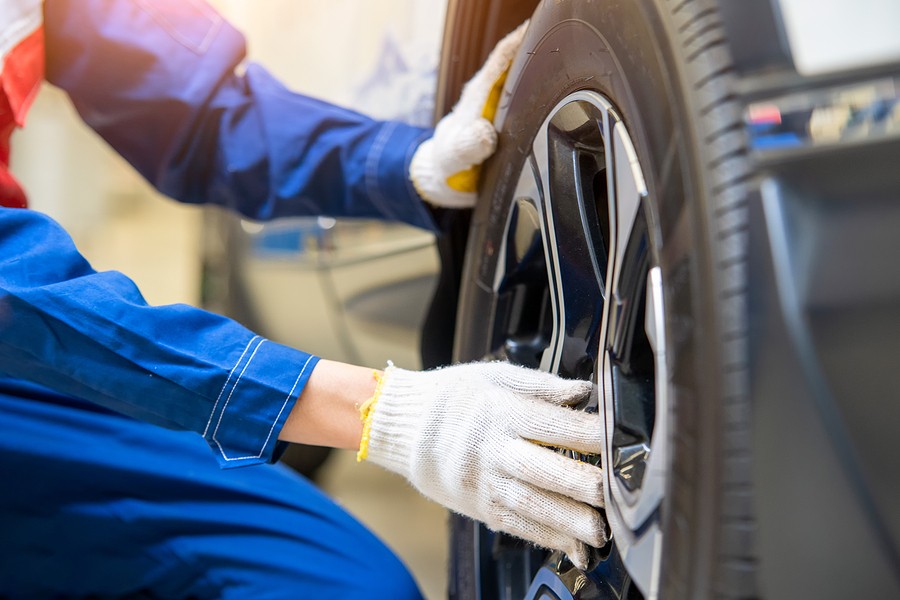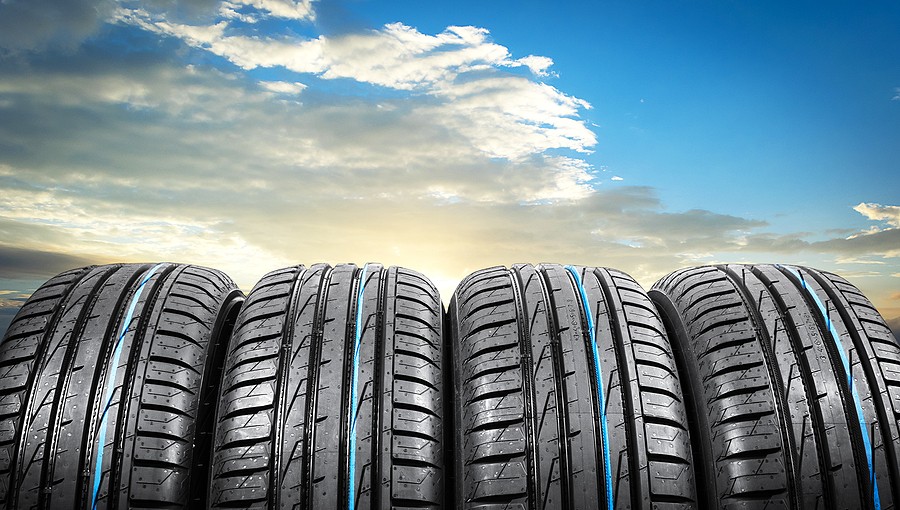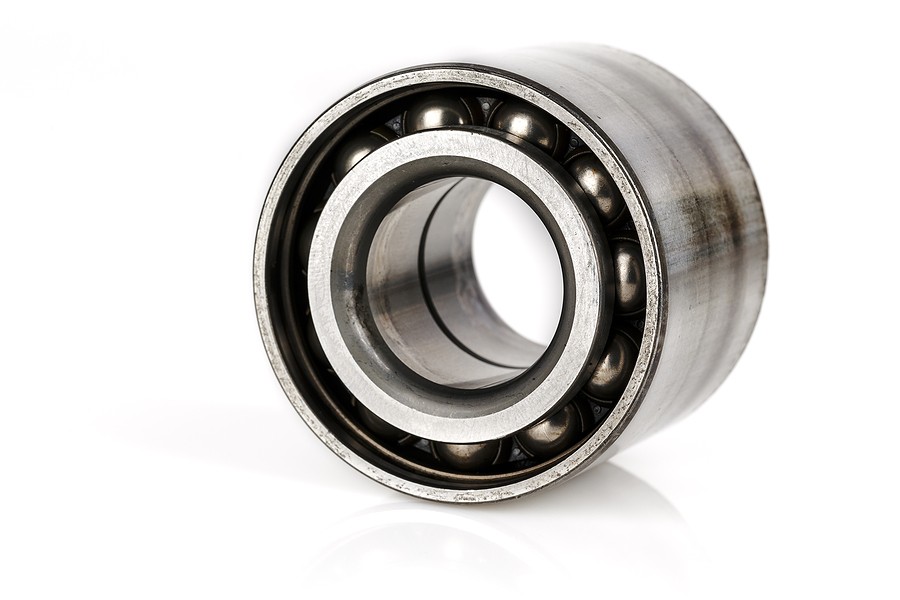Automobile enthusiasts and everyday drivers alike know the importance of maintaining their vehicles to ensure safety and longevity. One critical yet often overlooked aspect of car maintenance is taking care of the wheel bearings. Understanding the warning signs of bad wheel bearings can prevent accidents and costly repairs down the line. In this guide, we delve into the indicators of wheel bearing issues and how to address them promptly.

Introduction
In the fast-paced sphere of automotive maintenance, understanding the subtle hints of a potential problem can be a lifesaver. Wheel bearings, although not the star of the show, play a pivotal role in securing a smooth and noise-free ride. These small sets of steel balls, confined within a metal ring known as a race, undertake the critical job of allowing the wheel to spin fast with minimal friction, ensuring that your ride is smooth and steady.
Understanding the Role of Wheel Bearings in Your Vehicle
Wheel bearings lie in the heart of your vehicle's wheel hub, taking on the hefty responsibility of bearing the vehicle's load while ensuring the wheels run smoothly and steadily. Despite their small size, they play a significant role in your vehicle's overall performance, dictating the smoothness and stability of your ride. Being aware of their critical function is the first step towards recognizing when they start showing signs of wear and tear.
The Importance of Timely Wheel Bearings Maintenance
Ignoring the maintenance of wheel bearings is not just a matter of enduring unpleasant noises or vibrations during your ride. It is a severe safety concern, as well-functioning wheel bearings are crucial in preventing accidents that occur from wheel detachment. Adhering to a timely maintenance schedule can be the determining factor between a safe drive and a potential mishap.
Reading the Signs: A Prelude to Wheel Bearings Issues
Recognizing the initial signs of wheel bearing issues is essential in preventing more significant problems. A driver with a keen ear and eye might notice unusual noises or vibrations emanating from the wheel area. These early indicators are your vehicle's way of signaling that it's time to pay attention to the wheel bearings.
Scope of the Blog: What to Expect
As we venture further into this guide, expect a deep dive into the science behind wheel bearings, common symptoms of wear and tear, and expert advice on diagnosing and addressing wheel bearing issues. Equipped with this knowledge, you can avoid further damage to your vehicle and ensure a safer driving experience.

Section 1: The Science Behind Wheel Bearings
Before we delve into the warning signs of a bad wheel bearing, let's take a moment to understand the science behind this vital component. Knowing how wheel bearings work and their importance in your vehicle's functionality can provide insight into the warning signs we will discuss later in this guide.
Basics of Wheel Bearings: A Brief Overview
Wheel bearings are essentially a set of steel balls held together by a metal ring, commonly known as a race. They are a critical component in your vehicle, as they allow the wheel to spin fast with minimal friction. Found in the hub of each wheel, wheel bearings have the vital job of carrying the vehicle's load, ensuring a smooth ride.
How Wheel Bearings Work: A Technical Insight
Inside the wheel assembly, the wheel bearings have a multi-faceted role. They need to bear the vehicle's weight and the forces exerted during cornering. The bearings are greased to reduce friction and wear. Over time, this grease can break down, dirt can enter the bearing race, and wear and tear can occur, leading to a decrease in bearing efficiency and an increase in noise and vibration.
Lifespan of Wheel Bearings: When to Start Worrying
Wheel bearings are designed to last a long time, often exceeding 100,000 miles. However, their lifespan can be significantly reduced due to several factors such as driving conditions, accidents, or lack of maintenance. When wheel bearings approach the end of their lifespan, they start to give off warning signs which, if ignored, can lead to complete failure.

Different Types of Wheel Bearings and Their Characteristics
Wheel bearings come in various types, each with its unique characteristics and potential issues. The most common types are ball bearings, roller bearings, and tapered roller bearings. Understanding the differences between these can help in diagnosing potential problems and finding the right replacement when necessary.
Section 2: Warning Signs of Failing Wheel Bearings
As a vigilant vehicle owner, identifying the early warning signs of failing wheel bearings can save you from sudden breakdowns and hefty repair bills. In this section, we delve deep into the potential symptoms that signal it's time to inspect or replace your wheel bearings.
Unusual Noises from the Wheels
Arguably the first sign of failing wheel bearings is the occurrence of unusual noises emanating from the wheels. This could be a grumbling, growling, or humming noise that gets louder as the vehicle accelerates. It's vital to investigate these noises immediately to prevent further complications.
Identifying the Noise
Be attentive to changes in your vehicle's soundscape. A distinct humming, especially during turns or when changing lanes, can be a direct indication of wheel bearing issues.
What Causes the Noise
The noises are often due to the wear and tear of the bearing races, leading to irregular movement and friction, which manifests as an audible signal of distress from your vehicle.

Distinguishing Wheel Bearing Noise from Others
It might be challenging distinguishing wheel bearing noises from other potential problems. Usually, wheel bearing noises are persistent and increase with the vehicle’s speed.
Expert Tips on Handling Noises
Consult with a professional auto technician if you suspect a wheel bearing issue. They can correctly identify and address the problem before it escalates.
Vibrations and Play
Failing wheel bearings can also cause noticeable vibrations or play in the steering wheel. It's an alarming sign that warrants immediate attention.
Detecting Vibrations and Play
If you feel a consistent vibration in the steering wheel or a notable play when you move it from side to side, it's time to inspect the wheel bearings.
Understanding the Underlying Issues
These issues usually stem from a lack of firm support from the wheel bearings, causing misalignments and irregular movements in the wheel assembly.
Differentiating Between Vibrations
Not all vibrations are due to wheel bearing issues. Comparing the nature and timing of the vibrations can help pinpoint the root cause.

Tips on Addressing Vibrations
Seek immediate professional help to inspect and possibly replace the deteriorating wheel bearings to prevent accidents or further damages.
Abnormal Tire Wear
Failing wheel bearings often lead to abnormal tire wear, signaling that your vehicle is overdue for a wheel bearing inspection.
Recognizing Abnormal Tire Wear
Keep an eye on uneven or faster tire wear, which could be a result of a bad wheel bearing affecting the wheel's alignment.
Causes of Abnormal Tire Wear
The uneven distribution of weight and a lack of firm support from the wheel bearings can lead to abnormal tire wear.
Identifying the Extent of Tire Wear
Regular tire inspections can help identify this issue early on. Look for uneven patterns and compare the wear on different tires.

Tips for Handling Tire Wear
Address the issue promptly to prevent further complications, including compromised safety and increased maintenance costs.
ABS Malfunction
Modern vehicles equipped with Anti-lock Braking Systems (ABS) might experience malfunctions due to failing wheel bearings.
Spotting ABS Malfunctions
If your ABS warning light illuminates, it could be a sign of wheel bearing issues, as these bearings often house the ABS sensors.
Understanding the Connection
The ABS sensors work closely with the wheel bearings, and any issue with the bearings can lead to malfunctioning of the ABS.
Distinguishing ABS Issues
Consult with a professional to differentiate between an ABS system issue and a wheel bearing problem, as the symptoms might overlap.
Tips for Handling ABS Malfunctions
Seek professional advice to correctly identify and address the issue, as both ABS and wheel bearing problems require immediate attention.

Section 3: Wheel Bearings and Safety Concerns
Safety should always be your primary concern when it comes to vehicle maintenance. In this section, we elucidate the possible safety risks associated with failing wheel bearings and how you can mitigate them through timely interventions.
Increased Risk of Accidents
Wheel bearings are critical components in ensuring a smooth and safe ride. A failure in the wheel bearings can potentially lead to catastrophic outcomes, including accidents.
Recognizing the Risks
Failing wheel bearings can lead to wheel detachment, posing a serious safety risk on the road. It's essential to recognize these risks early to prevent accidents.

Underlying Causes of Risks
Worn out or damaged wheel bearings can no longer provide the necessary support, leading to unstable and unsafe driving conditions.
Comparing Risks
Understanding the level of risk associated with different stages of wheel bearing damage can help prioritize repairs and replacements.
Mitigating the Risks
Engaging in regular vehicle maintenance and being responsive to the early warning signs can significantly mitigate the risks associated with failing wheel bearings.
Legal Repercussions
In many jurisdictions, driving with known vehicle deficiencies, such as failing wheel bearings, can have legal repercussions.
Understanding Legal Liabilities
Being aware of the legal liabilities associated with neglecting vehicle maintenance is crucial to avoid fines or other penalties.

Causes of Legal Repercussions
Ignoring the warning signs of failing wheel bearings and continuing to drive can potentially lead to legal action, especially in the case of accidents caused by vehicle malfunction.
Preventing Legal Repercussions
Preventing legal repercussions begins with proactive vehicle maintenance and timely repairs to ensure road safety.
Tips on Avoiding Legal Issues
Familiarize yourself with the legal requirements in your jurisdiction and adhere to a regular maintenance schedule to avoid potential legal complications.
Impact on Insurance Claims
Driving with failing wheel bearings can potentially influence the outcome of insurance claims, particularly if the failure was known and ignored.
Identifying the Impact
Understand how ignoring wheel bearing issues can negatively impact your insurance claims in the event of an accident.
Common Issues with Insurance Claims
Insurance companies may deny claims if it is found that the accident was caused due to neglected maintenance, including failing wheel bearings.

Tips for Handling Insurance Claims
To facilitate smooth insurance claims, ensure that your vehicle is well-maintained and complies with safety standards at all times.
Expert Advice on Insurance Claims
Seek advice from industry experts to understand how you can prevent negative impacts on your insurance claims by maintaining your vehicle appropriately.
The Role of Regular Maintenance
Regular maintenance is not just about preserving the longevity of your vehicle, but it is also a critical aspect of ensuring road safety.
Understanding the Importance
Grasping the importance of regular maintenance can help prevent potential accidents and avoid costly repairs in the long run.
Setting a Maintenance Schedule
Developing a maintenance schedule that includes regular checks on vital components, including wheel bearings, can potentially save lives.
Implementing a Maintenance Plan
Implementing a maintenance plan is the first step towards a safer and more reliable vehicle.

Expert Tips on Maintenance
Seek advice from experienced professionals to develop a comprehensive maintenance plan that addresses all potential issues, including wheel bearing wear and tear.
In the realm of vehicle maintenance, the integrity of the wheel bearings stands as a sentinel that guards against unforeseen mishaps and ensures a smoother journey on the road. As we navigate through the bustling streets or traverse long highways, being attuned to the subtle yet critical warning signs of bad wheel bearings is more than just a precaution — it is a responsibility. This extensive guide has embarked upon a mission to educate readers about the manifold aspects of wheel bearing health, impressing upon them the dire consequences that negligence in this sphere can incur, both legally and in terms of safety. Remember, a vehicle in optimal condition is not just a marker of pride, but a beacon of safety on the road, safeguarding you and others from potential mishaps.
As we draw this enlightening journey to a close, we fervently hope that the depth of information provided serves as a catalyst for change, encouraging vehicle owners to adopt a more proactive stance towards maintenance. Regular inspections and timely interventions are not just beneficial but absolutely vital in averting accidents and ensuring a harmonious flow of traffic on our roads. Let's foster a culture of preventative care, where we don't just wait for the glaring signs of damage, but actively seek to maintain the pristine condition of every vehicle component, the wheel bearings included. As you turn the ignition key next time, let it be a reminder to keep a vigilant eye on the health of your vehicle, pledging to prioritize safety and efficiency over convenience. Drive safe, stay alert, and let the wheels of caution roll smoothly towards a safer future.



